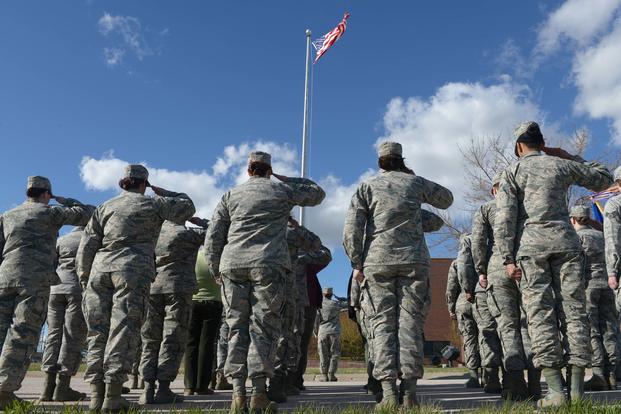NATIONAL HARBOR, Md. -- One woman remains in training to become a battlefield Tactical Air Control Party (TACP) specialist, one of several special operations jobs in the Air Force, the head of Air Education and Training Command said Tuesday.
"We have one female that's in the course right now," AETC commander Gen. Darryl Roberson said during a Facebook Live interview Tuesday with Military.com.
Roberson didn't identify the airman, who joined the program Aug. 14 after Basic Military Training at Joint Base San Antonio-Lackland, Texas, according to Air Force Times.
Roberson said four other women have entered Air Force special operations training since then-Defense Secretary Ashton Carter reversed long-standing U.S. military traditions in late 2015, when he announced that all military occupational specialties would open to women.
Related content:
- 5th Air Force Woman to Attempt Special Operations Training
- 3rd Woman to Attempt Air Force Battlefield Training
- 2017 AFA'S Air, Space & Cyber Conference
Those other trainees have left the program for various reasons, the general said.
One woman who began SpecOps training in August dropped out that same month. One TACP retrainee ended up removing herself from training due to a leg injury last year; a combat rescue officer candidate passed the physical test but never completed the selection program application; and another non-prior service TACP candidate couldn't meet entry standards following BMT.
Related Video:
Roberson said he is hopeful more women will seek out some of the toughest jobs the service has to offer.
"Come and join us!" he said during Tuesday's interview. "We can help you get through it."
The general this spring introduced a new initiative, the Continuum of Learning, which aims to streamline training for airmen just beginning their Air Force careers.
"We're working really hard for battlefield airmen. It's our hardest specialty area; it's our biggest attrition rate area," Roberson said. "We have to figure out better ways to train and get these airmen through the program. Several of the ways we're doing this is through the Continuum of Learning [initiative]."
"We just instituted a brand-new course -- the Battlefield Airmen Prep Course, a preparatory course that once you finish BMT ... we're going to put you in this training program that is six weeks long. And it's going to prepare you to start the original course of initial entry," he said.
Following the prep course, airmen head to the indoctrination course, both of which are under the Battlefield Airman Training Group, also at JBSA-Lackland, Marilyn Holliday, a spokeswoman for AETC, said last month. "Both of these groups are part of the 37th Training Wing" at Lackland.
Roberson said airmen must trust the process.
"It's to get you ready better than we've ever done before, so when you start the [special operations training] course, your chances of success are much higher," he said.
Lt. Gen. Marshall "Brad" Webb, head of Air Force Special Operations Command, said he is confident women will soon count themselves among the service's commandos.
"It's going to happen, and we are ready in this command for it to happen," he said during a briefing with reporters. "It's going to be a huge non-event when it does happen."
Webb said he isn't sure when, exactly, or whether some special operations fields may see more female recruits than others. But he drew a comparison to the 1990s, when female pilots started flying service aircraft and many advanced into leadership positions.
"It's maturing at a pace that you'd expect," he said.
So far, six women have expressed interest in applying for special operations positions, including three for TAC-P, two for combat control officer and one for pararescue jumper (PJ), according to Command Master Sgt. Greg Smith.
Of those, two followed through, but one suffered a foot injury during initial training and another wasn't ultimately selected, Smith said.
"For recruitment, it is open, it is there," he said. "Assessment, that is always our hardest part. We graduate less than 1 percent of males that go through, so you can expect probably 1 percent of females that go through will do that. We will get there. We are enthusiatsically waiting and wanting this to happen.
"If you watch 'American Ninja Warrior' today, I'll tell you right now we need to go hang out there with recruitment because half of them could kick the crap out of half of us," he added, referring to the NBC series on obstacle course competitions. "Those are the ones we want in special tactics today."
-- Oriana Pawlyk can be reached at oriana.pawlyk@military.com. Follow her on Twitter at @Oriana0214.






























